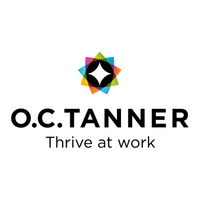How employee appreciation drives inclusive cultures
It’s far easier for organisations to pay lip-service to diversity and inclusion rather than tackle initiatives with real staying power and impact. But if leaders are serious about creating inclusive cultures that out-perform competitors and deliver high levels of employee satisfaction, they must focus on proven methods that operate at the very heart of cultural transformation.
Employee appreciation is one such driving force that positively nurtures change rather than forces its hand, creating a culture of belonging, equity and deep connections.
Employee recognition creates impacts far beyond making employees feel appreciated for their efforts and results. Employees who enjoy recognition as part of their everyday employee experience are four times’ more likely to report high inclusion and 13 times’ more likely to feel they belong at the organisation.
Strong sense of belonging
When done well – which means intentionally, authentically and in a personalised and timely manner – employee recognition helps each employee to feel they are a contributing and valued member of the team, and in doing so fosters a strong sense of belonging.
By communicating the important role each individual plays, they feel that their contributions are truly appreciated and that they’re in a safe and caring space.
The most effective recognition links appreciation to company values and purpose so that when employees are recognised, it’s made clear how their efforts, achievements and behaviours are linked to ‘the bigger picture’ and a broader purpose.
This purpose could be to make the world a greener place, or to ensure everyone has access to affordable technology. Whatever it is, employees are rallied towards this common, relatable purpose, helping to bring everyone together to strengthen their sense of belonging.
Connect people together
There’s no doubt that recognition powerfully connects people together and it can do this across teams, departments and locations with peer-to-peer recognition crucial to strengthening workplace relationships.
By encouraging employees to praise their colleagues, calling-out instances when they’ve shown great work, effort and/or behaviours, this naturally strengthens colleague-to-colleague ties. Employees also build stronger ties to their managers and the organisation as a whole.
A truly inclusive culture is one which celebrates everyone’s unique characteristics, and this can be achieved instinctively through recognition giving.
Tailored, personalised recognition in which each individual’s characteristics are called-out and celebrated ensures employees feel safe and accepted, with employees who feel their unique identities are appreciated at work twice as likely to feel a sense of belonging.
Giving and receiving recognition
Everyone must be given the opportunity to give and receive recognition in order to support a culture of equity and inclusivity. If just the highest performers are praised, some employees may never receive recognition, leading to feelings of dejection and low self-worth.
So employees must be encouraged to recognise their colleagues for efforts as well as results; guided on how to effectively give recognition; and provided with user-friendly recognition tools. By proactively recognising all employees - including those who may be overlooked, feel excluded, or have less-visible roles - this nurtures fairness and equality.
In addition, recognition can be used to encourage inclusive behaviours among the workforce. An employee may go ‘above and beyond’ to welcome a new hire into the company or put time aside to bring their team closer together, and such behaviours must be recognised and celebrated.
The act of publicly praising an employee for showing inclusivity and making it clear to others why they are being appreciated, will naturally encourage the desirable behaviours to be replicated by others.
Harnessing data-led insights
Finally, organisations must harness data-led insights to improve inclusivity. Tracking recognition data, for example, can help monitor the success of the recognition programme, understand recognition trends and reveal how the company culture is being expressed in practice.
By integrating key recognition data - such as who is being recognised, who is giving recognition and what is being recognised - with other demographic and performance data, this can identify ways to make the employee experience more inclusive.
Leaders are increasingly using recognition programmes to celebrate and reward their people, however they don’t always join the dots between recognition giving and creating more inclusive cultures. In fact, when recognition is done well, leaders unlock the collective strength of a culture where everyone feels seen, valued, and connected.
Supplied by REBA Associate Member, O. C. Tanner
Giving teams the integrated tools they need when, where and how they need them.








